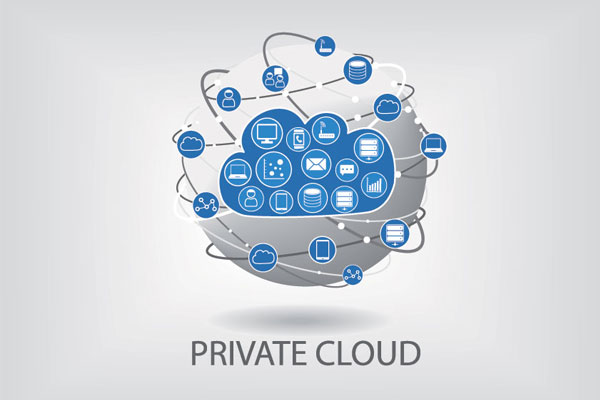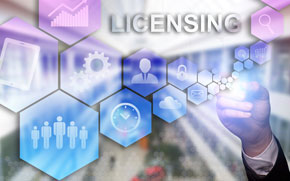Public Cloud
We host the service for you. No equipment to buy, no special requirements. Just hook up to the service and get started. We configure the solution to meet your requirements – or we work with you and configure it together.
This is an ideal scenario for a smaller organisation, or a Proof of Concept or fast-start project for a larger organisation. The solution is hosted on Carrier Grade Data Centres, with accompanying top-level site security and access policies. Of course, any organisation can use this approach, and we have many Customers – large and small – using the Pure Cloud service.
Public Cloud provides a completely outsourced solution, including database, application, web, and communications servers, and the hosting and management of hardware infrastructure. The Selcomm application software is accessed in the cloud, with no need for capital expenditure or additional staff costs in IT management or application purchase.
Other Flexible Deployment Options

We offer a flexible implementation and licensing architecture – On-Premise or Pure Cloud or any Hybrid suitable for your business. The Selcomm Suite is entirely browser-based, so no special equipment is required to access the system. You use the browser of your choice and access the system anywhere, on any device.

There are occasions when a hybrid scenario is required. You may have international operations and require the solution to be made available in multiple geographies, but wish to retain the core data in-country and specialised access for international users. We can configure the system and the access security according to your requirements.

In some situations, you may not wish to host the solution yourselves, but you do want the solution private to your use rather than a shared infrastructure. In this scenario, we host in a Data Centre suitable for the purpose. This may be located as necessary – in-country – at our Data Centre – or wherever your requirements dictate.
A possible reason for this may be Data Sovereignty. You may require that the data stays within your national borders, and therefore prefer to host in a Data Centre in-country. We set up the solution to your requirements in the Data Centre of choice, and then provide the service in the same way as for Public Cloud, except it is in-country and you are the sole user.

On-Premise solutions require the equipment to be installed in your Data Centre.
The commercial arrangements may vary (see Commercial Models below) to accommodate different support models and different license structures. We may look after the system for you, or you may look after the system with our support – the specific level of which would be agreed. We are flexible in our approach to all these issues.

Managed solutions allow us to provide any level of support and management that you require.
Once we agree the division of responsibilities, we deploy our resources to deliver the agreed level of management. This may vary from lo-touch (we provide only L3 support for application changes) to hi-touch (we deliver a completely managed service, looking after all support even though the solution is deployed on your premises). We have no constraints on where the division should be made, and are prepared to support you according to your preferred business model.

In-House solutions are those where you provide some or all of the support or management services, regardless of the deployment of the equipment.
For example – You may use a Private Cloud solution, and wish to provide L1 support and contribute to the diagnosis and management of L2 issues. Your in-house support team would be trained to understand this, and we would provide some level of support – either on-Premise or remotely as agreed – to complete the support structure.
Alternatively, you may wish to have an on-Premise solution and have us support it entirely – or support it yourselves entirely (apart from application fixes and upgrades). We can accommodate any of these structures.

Any combination of these models that suits your business requirements can be accommodated.
We are always happy to tailor the way in which systems are deployed and support is provided, so you receive the best possible service.
Commercial Models
Perhaps the most useful part of our offering is the flexibility of our commercial models. We discuss here models related to the direct Customer – Supplier relationship. For a more detailed discussion related to how we partner, and the commercial details of those arrangements, please see Partners.

Implementation Charges of course vary widely depending on your requirements.
We pride ourselves in being a light-touch solution. Our Implementation Teams are small and highly skilled. We implement quickly. You do not require, and neither do you encounter, a vast team of dozens of people or more to implement our solution. The solution is highly configurable, and we use a team that is expert at implementing, configuring and tuning the solution to meet your requirements.
Typically, that might range from a team of 4 people for 2 months to a team of 8 people for 6 months. Rarely would it require a greater level of effort, unless the requirements are not well defined and you need some consultative advice from us in finalising them. In this case we would work with you to define the requirements and as they are confirmed, manage their implementation.
We have been called upon often to diagnose and remedy complex integration requirements as part of the solution – and for this reason, believe we can address any integration requirement with aplomb.

Traditional License Models are based on some level of organisational size (users, Customers, Accounts, etc). There is a License Fee and then an Annual Support Fee at a specific percentage of the License Fee – in our case usually 18%.
You may wish to adopt this sort of model, and we can provide pricing to suit. This is a capital-intensive model.
Again, we are flexible and happy to define the license fee in terms that suit your business and make sense commercially. Our usual metric for this is to use bands of Customers, but we can use any metric that is measurable and clear, such as connections, accounts, bandwidth volume – etc.

- Desk-Side Support – Personnel on site to address issues experienced by users. This is usually provided entirely by the Customer. In some cases, however, the Customer requires either temporarily or permanently, specific on-site support from us to address these issues. Typically, this would be during the initial bedding-down of the system, but the Customer may wish to continue this in some form on-going.
- On-Site Support – Personnel on-site to assist the Customer Team to resolve issues. On occasion, Customers ask for this service to be provided, either temporarily during bedding-down of the system and education of the Customer Team, or on an on-going basis. We accommodate these requests and negotiate the level of support that is appropriate.
- Remote Support – Support provided remotely by our Team. This is the most common arrangement with our Customers, and almost all Cloud Customers adopt this model – it is obviously lower cost than an on-site option.
- L1 – First point of call for initial issue diagnosis and initial fix (if possible). Traditionally, our Customers prefer to deliver this element of Support because they already have a Help Desk to support other systems. Users often call without understanding the reason they are experiencing an issue, and it may be something completely different from our system, even though they experience it as being the problem at the time. Therefore, it is usually preferable for our Customers to provide L1 Support.
- L2 – Second level support for more difficult issues. This often requires some dialogue with the infrastructure provider to isolate where the issue is occurring, and then to diagnose the fix. This is often a joint effort between us and our Customers although we can accommodate anything from 0% to 100% responsibility for this level.
- L3 – Third level application support. This involves application changes or configurations that need to be provided by an experienced and skilled team. Responsibility for L3 support is almost always entirely with us.
Depending on your specific requirements, we can design a Support Structure and associated pricing of the services. We can always design the structure, and we would expect to meet you expectations when negotiating the associated charges.

When Customers want low-capital or zero-capital models, we work with them to determine the best fee structure to meet their needs.
One model that can be considered zero-capital and zero-operational is to pay fees based on Revenue Billed through the system. This might be considered revenue sharing or commission-based. The fees can be treated as negative revenue rather than cost. There can be substantial advantages to this sort of approach. The option to treat the fees as cost is also available.
We can design a Fee Structure that suits your business and financial demands that is entirely Operational if desired, although some minimum charges would apply to ensure we can recover our investment. Such minimum charges are always moderate as our solution is very economic to implement.
Rather than paying an up-front License Fee and on-going Maintenance Fees, or having to acquire and install equipment for the solution with its attendant capital charges, an Operational Model bundles all these into a single (for instance) Monthly Fee. This is the basis of a Cloud Services Model as a prime example.
The Usage-Based Models below are included in Operational Cost Models, which are characteristically monthly (or some other frequency) charges that incorporate all (or most) of the components of the solution.
The result of these options is that we can always find a blend that suits your specific circumstances.

Usage-Based Charges make up a Fee Structure that is based on units consumed or processed.
This allows the Fee Structure to reflect the level of business being done, and tie it more closely with to the ability to pay.
The units can be anything we agree on that can be measured easily and is visible to both parties. Examples include: Users, Customers, Handsets, Devices, Bandwidth, Transactions, Revenue, and so on.
Select Software has pioneered this approach, and applied it to Cloud Services with great success, and also to start-up business scenarios so that the barrier to entry for new players is for all intents and purposes, eliminated. We observe that even established players are looking for more creative commercial models, and our experience in this area is second to none – we can design a model that works for you.
Models that are based on Revenue Billed can be called Revenue Sharing, but they do not have to be treated as such. Having a fee based on Revenue is not significantly different from a Fee based on the number of Customers or the number of Accounts, and that would not be called Revenue Sharing. The key issue is to scale the Fees based on a measure of Business Volume.

Suffice it to say that we can design a model that fits your requirements exactly.
There are elements of all these models that have advantages in some situations, and therefore a hybrid approach may deliver the best outcome. We are only too pleased to discuss these options with you.

In a Cloud Model, we are effectively financing the Data Centre equipment and operational costs, and structuring Fees to recover that cost from our Customers collectively.
It is but a small step to be able to accommodate the financing of other equipment and recover the costs in recurring charges. Since this is what Communications Service providers do and have done for decades, it is a familiar model.
What we offer is the opportunity to incorporate other equipment into a solution and have that addressed in the same way.
There are elements of all these models that have advantages in some situations, and therefore a hybrid approach may deliver the best outcome. We are only too pleased to discuss these options with you.
For example
A Utility may roll out a Smart Meter Network. For commercial or industrial Customers, there may be considerable additional equipment expense – outside any Government Funding proposals. The Utility may offer a deal to a large Customer that incorporates the smart meters, any comms modules and network charges and structure the fees so that a single recurring fee per device is payable by the Customer. While this might be reasonably common, not so common would be to finance the devices and meters as well.
Select Software is willing to look at ways of making this happen for the Customer and the Service Provider. This enables a single operational charge to cover the purchase, implementation, support and maintenance of the entire solution – software, hardware, comms modules, network, and so on. This can be very appealing to some Customers, and tip the balance in our collective favour.
Contact us if you have further questions on these options or any other issue of course.






